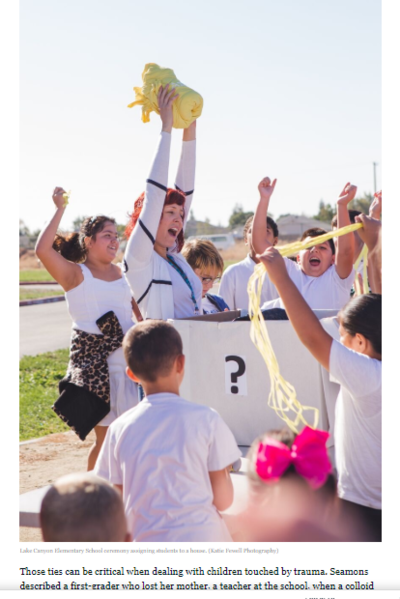Sept. 30, 2016 was a big day for Lake Canyon Elementary. Students, teachers, and staff arrived at the Galt, California, school wearing white shirts and before long were sent to stand by one of six large cardboard boxes. After a drum roll, cannons sprayed confetti over each cluster of students. The color matched one of six new banners, like the orange one reading “Sebete” and featuring a bear meant to symbolize courage. As music played, the boxes were ripped open to reveal matching T-shirts. Pulling them over their heads, students began doing something they’d continue every day until graduating: representing their house. Three semesters later, Principal Judi Hayes said, “Every part of our school culture now flows through the lens of the house system.”
That sense of camaraderie and identity is part of what schools like Lake Canyon are trying to develop. “We have first-graders on our campus that would never have the opportunity to become buddies with a fifth-grader,” Hayes said, “but now they see each other at the house meeting every Friday.” Sixth-grade teacher Val Seamons added, “They really deck out for those,” with kids even donning house-colored socks and tutus in a bid for extra points. Three days a week for the first two trimesters of the year, students eat lunch with their houses, and every morning the winning house from the previous day is announced. The house system also gives children the opportunity to interact with teachers they normally would have no cause to know, Hayes said, “creating smaller communities within the larger community where they can make stronger bonds and connections.”
Those ties can be critical when dealing with children touched by trauma. Seamons described a first-grader who lost her mother, a teacher at the school, when a colloid cyst burst in the 34-year-old’s brain. Seamons said she expressed concern to the students of Sebete: “And the first kid stood up, and he said, ‘The Sebete house has got her.’ And this went all down the line. The kids were all like, ‘We’ve got her. The house has got her.' ”
To read more of Gail Cornwall's article, please click here.



Comments (1)